Many friendly words are exchanged with the tannery workers, proud they are to work here and they're well payed too. "A tannery is a gold mine" goes a saying. The omnipresent malodour of fresh animal skin and dye and urin and pigion droppings (used in the process) though is hard to swallow and written all over some of the workers faces.
You can loose the feel for travelling quickly. That's what I feel these first days after Spain.
Partying in Europe quickly restores the consumer inside, the guy that I was in my life before.
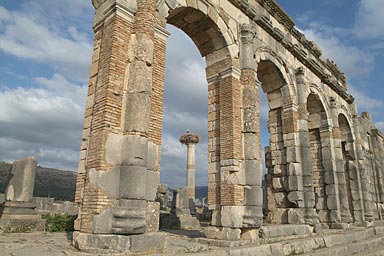 In Spain you can spend as much money in a day as in Africa in a week. And it is enticing to spend. It makes you look rich and beautiful. And most people who come to Tarifa are or pretend to be just that.
In Spain you can spend as much money in a day as in Africa in a week. And it is enticing to spend. It makes you look rich and beautiful. And most people who come to Tarifa are or pretend to be just that.I've come for another 3 month, my second half, to Morocco. It takes me a few days to realise not to take it lightly. Like in football, even when you lead after the first half you still can loose the game.....
From Tanger we travel south, down the coast. ASILAH is beautiful, LARACHE a rubbish bin. We travel onwards viaSOUK-EL-ARBA-DU-RHARB to VOLUBILIS, an ancient Roman provincial capital, declared a Unesco world-heritage site just recently.And Hasna and I, still we don't know each other too well, but determined we are to give it a try. I am still not sure she likes her El-Nino T-shirt, I brought from Tarifa.
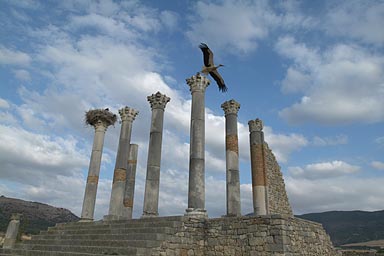 MOULAY IDRISS just afterwards is an interesting little town pressed against a mountain side. It is the tomb of Moulay Idriss, the holy founder of the first Islamic Kingdom of Morocco, that makes it a centre for Islamic pilgrimage, It is conservative, by nature, its people unfriendly and they regard the strange couple with suspicion. But as I said I am still trying to recapture my feel for country and people.
MOULAY IDRISS just afterwards is an interesting little town pressed against a mountain side. It is the tomb of Moulay Idriss, the holy founder of the first Islamic Kingdom of Morocco, that makes it a centre for Islamic pilgrimage, It is conservative, by nature, its people unfriendly and they regard the strange couple with suspicion. But as I said I am still trying to recapture my feel for country and people.On 14th of June after MEKNES we reach FES, Hasna's birth place.
Fes, the most complete Islamic town in the world, has much to offer. It virtually sucks me into the medina on all of the 4 days. Endless I can walk around in search for corners noone wants to go.
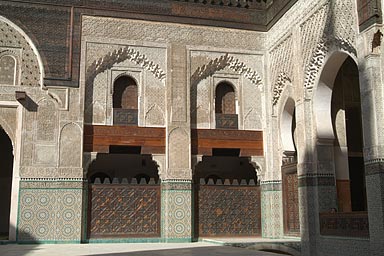 Hasna on the other side cannot share my interest. Of course not. She has lived here all her life. And the Medina is not the place a modern Fassi would go but for showing it to a tourist or curious relative.
Hasna on the other side cannot share my interest. Of course not. She has lived here all her life. And the Medina is not the place a modern Fassi would go but for showing it to a tourist or curious relative.Inside the medina it is the tanneries that I am after. Photographers have got to go for the tanneries.
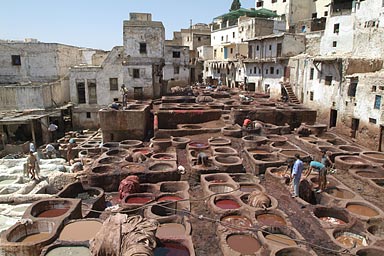 In the 4 days that I spend here (Hasna leaves earlier for Casablanca to catch up with a few things), I see 4 tanneries, most are smaller then the Tannerie Chouara, which is the one above, which is as well the one I was shown together with Hasna by a small boy on the first day.
In the 4 days that I spend here (Hasna leaves earlier for Casablanca to catch up with a few things), I see 4 tanneries, most are smaller then the Tannerie Chouara, which is the one above, which is as well the one I was shown together with Hasna by a small boy on the first day.The police took the boy away 30 minutes after our visit to the tannery, enforcement of rules to prevent harassment of tourists. I prefer a boy to an official guide who never stops littering you with rubbish stories you're not interested in and who shows you as many carpet shops as possible.
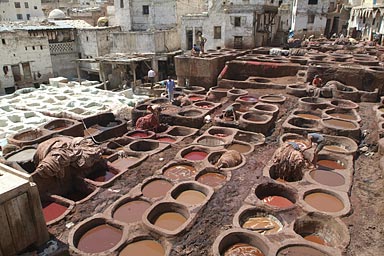 Friday it takes me a great many attempts to find the Chouara Tannery again. In the process I visit a few more, none as exiting and vast. The close to midday shots I do not even want to take as I have intention to come back for a better, earlier light shooting. But then I am taken round the whole thing by a nice chap called Farchardin for 1 Euro and a bottle of water.
Friday it takes me a great many attempts to find the Chouara Tannery again. In the process I visit a few more, none as exiting and vast. The close to midday shots I do not even want to take as I have intention to come back for a better, earlier light shooting. But then I am taken round the whole thing by a nice chap called Farchardin for 1 Euro and a bottle of water.Later from 12 onwards the medina starts to shut for the day. People are busy closing their shops and make it in time for the prayer. I listen to the spiritual chants that precede the Friday sermon and watch through the door of the Moulay Idriss Mousoleum from a distance. Next to me a small cat that fell from the roof is dying.
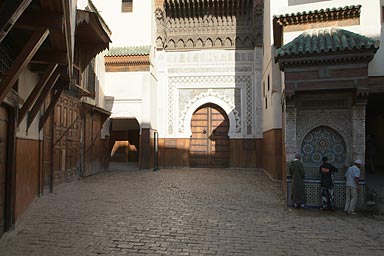 Saturday morning I finally attempt to shooting the tanneries in nice light. Tired after not much sleep (first it is too hot, then there's many midges, best sleep is between 6 and 8, it is too hot afterwards) I get up before 6, easily find my way to the tannery. Where I hang around around 7-ish well before my rendez-vous at 8 with Farchardin.
Saturday morning I finally attempt to shooting the tanneries in nice light. Tired after not much sleep (first it is too hot, then there's many midges, best sleep is between 6 and 8, it is too hot afterwards) I get up before 6, easily find my way to the tannery. Where I hang around around 7-ish well before my rendez-vous at 8 with Farchardin.The offensive smell from the dye is (already) well present and my early morning stomach just cannot take this. Happy to have taken some shots the other day I decide to give it a miss.
The medina still empty these early hours of the day and makes a good alternative target. A bit spooky, the tiny streets with no one around.
Where normally hundreds of chandlers in front of their hole-in-the-wall shops engage you in talk constantly, others and their donkeys rush the merchandises, which ever, from here to there, where busy Fassi shop for their daily needs and manic tourists, who never seem to understand how to dress, follow their guide prevails wide emptiness today. (what an English sentence - I think I keep it that way - you're welcome to correct it)
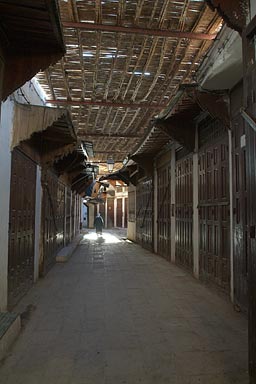
In CASABLANCA I rejoin with Hasna and spend the weekend. I like Casablanca. It is relaxed. A big town (4.5 Mio) with all the advantages and disadvantages. Its colonial French architecture reminds you a bit of Marseille. I could imagine living here. On the top of being normal Casa offers several kilometres of excellent beach and all the cuisine you (I) want.
I cannot but take Hasna to the Manhattan Club, a formidable French restaurant. Fish and Steak and a bottle of Bordeaux. I have not been to a great restaurant for a while and have not eaten that well in a restaurant for a while.
To sleep we drive the Land Rover onto the beach where we manage to get it stuck. Deflating the tires will have to wait till later.
After Casa the ice is broken. We are back in the travelling business, not just physically.
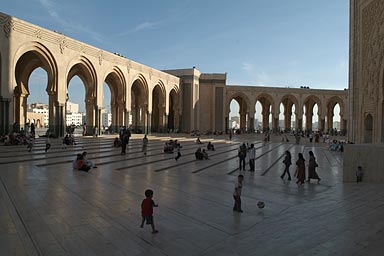 Monday 20th we again turn south, spend the evening in EL-JADIDA. Hasna prepares an excellent Fish Tagine, well spiced. Elaine an old French/Moroccan born, roughly 70, who joins us for dinner is equally overwhelmed by the "gouts". "Tu ne peut jamais mancher comme-ca dans un restaurant". "You'll never get that in a restaurant.".
Monday 20th we again turn south, spend the evening in EL-JADIDA. Hasna prepares an excellent Fish Tagine, well spiced. Elaine an old French/Moroccan born, roughly 70, who joins us for dinner is equally overwhelmed by the "gouts". "Tu ne peut jamais mancher comme-ca dans un restaurant". "You'll never get that in a restaurant.".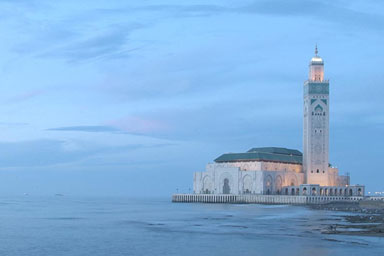 SAFI the next day. Fresh Sardines for 5DHs (0.5Euros). We have them grilled on charcoal at a local food stall. Hasna: "La vie est belle en Maroc."
SAFI the next day. Fresh Sardines for 5DHs (0.5Euros). We have them grilled on charcoal at a local food stall. Hasna: "La vie est belle en Maroc."We reach ESSAOUIRA late that day. It is the 21st of June, 2 days before the start of the Gaoua Festival.
23rd of June. It is Festival time. The town's buzzing. The craze, that the Gnaoua music creates in peoples' heads, is toxic, contagious. You cannot escape it in these next 4 days. Concerts from 6 p.m. to sometimes 3 in the morning. I am loving it.
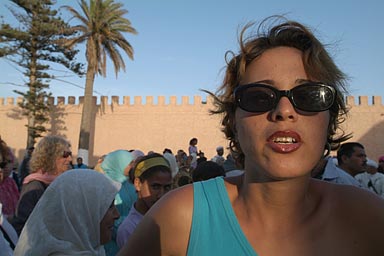
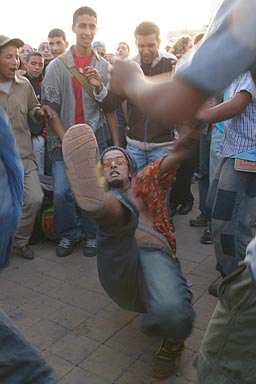
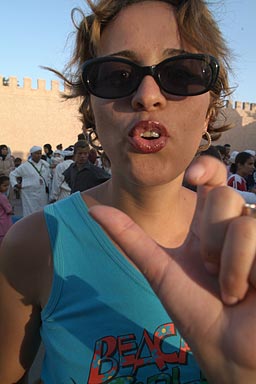
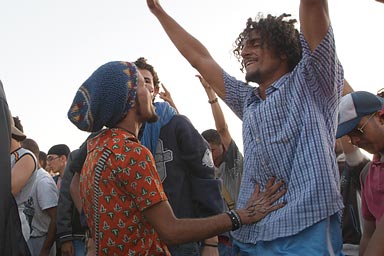 |
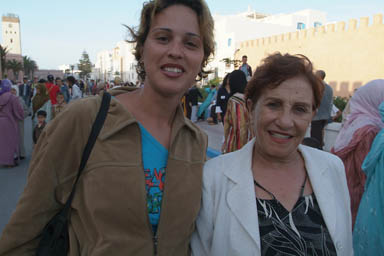 |
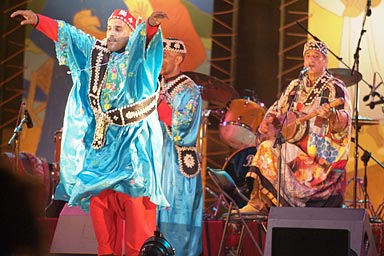
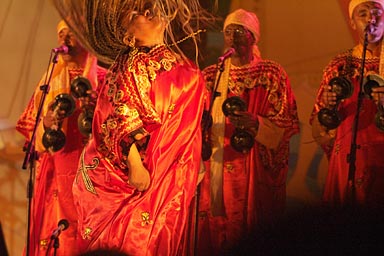 |
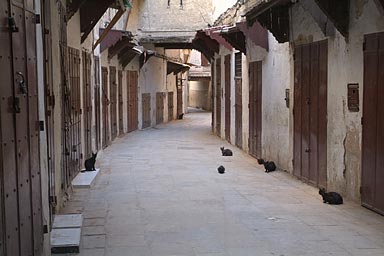
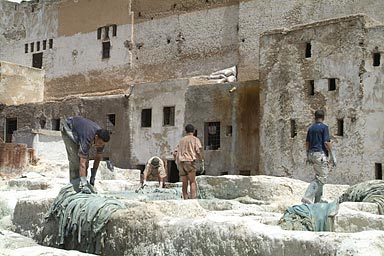

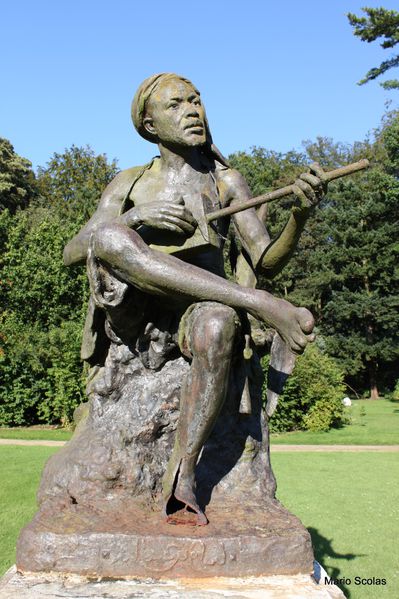
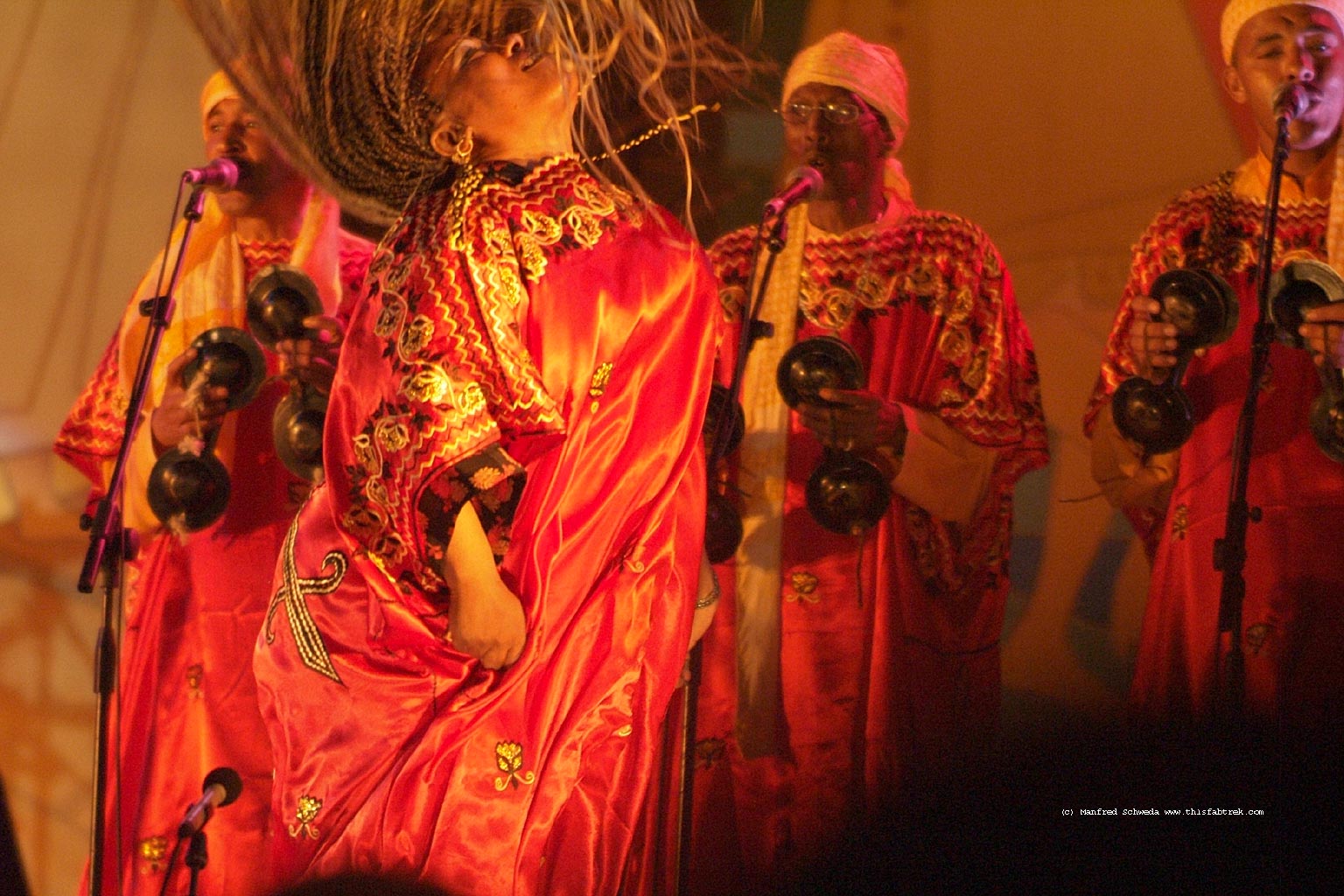












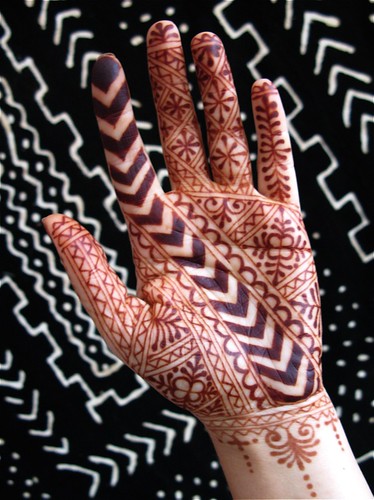












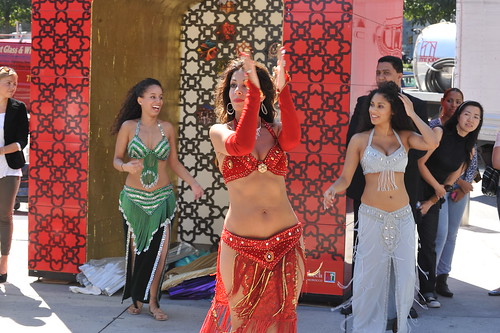
 .
.